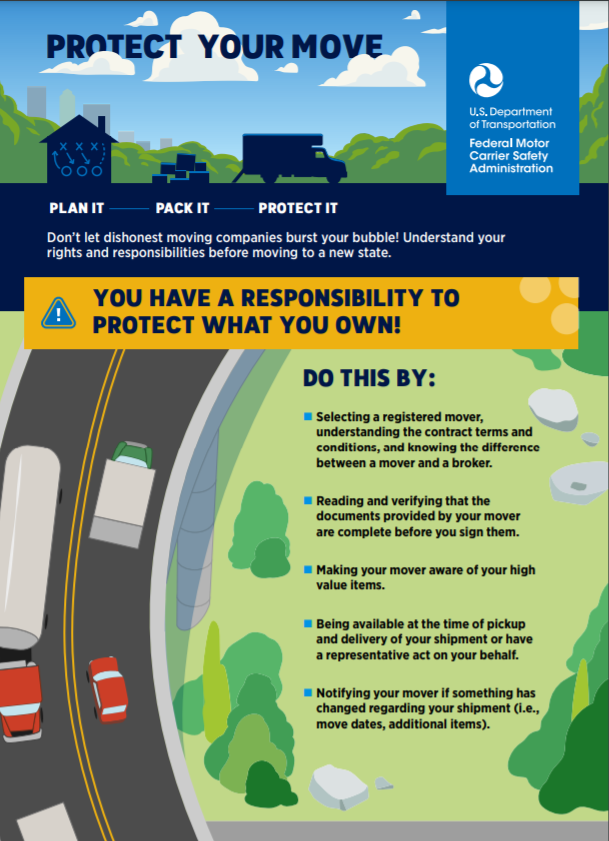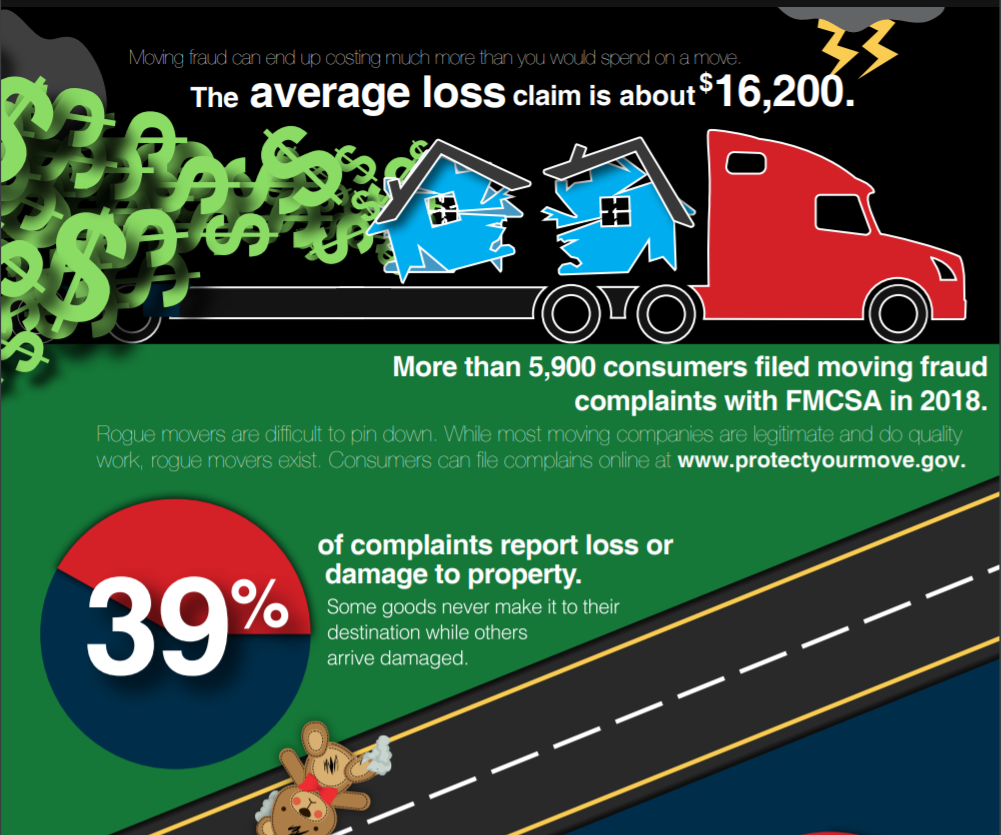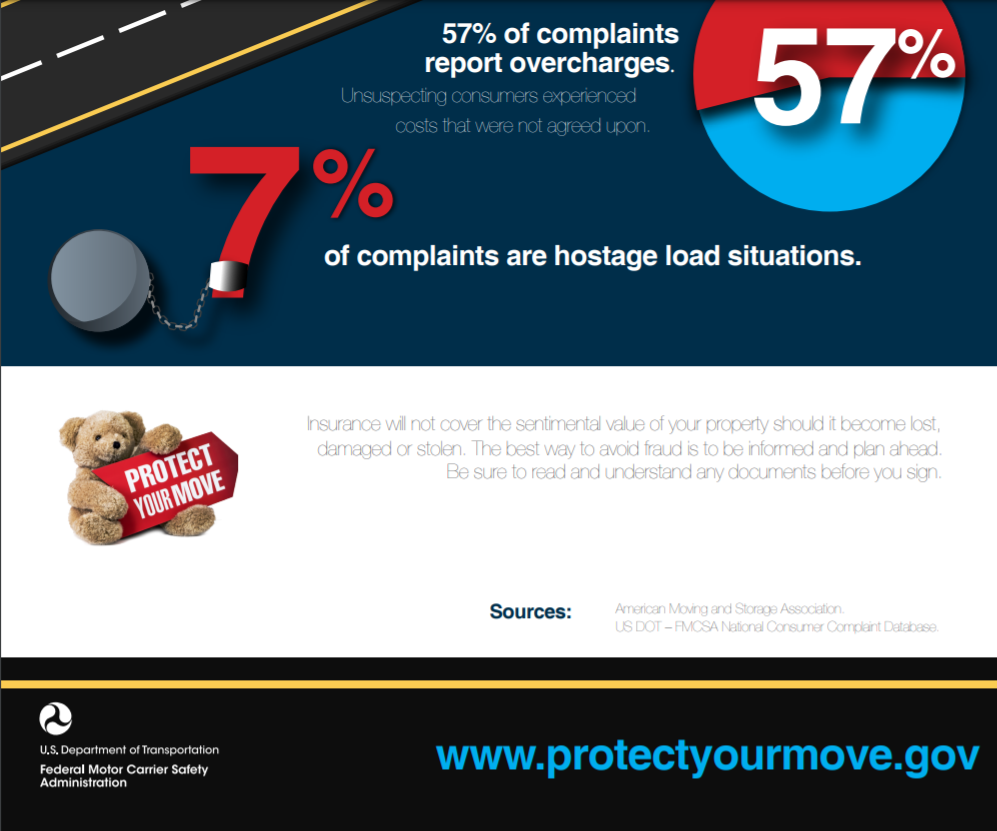
Moving Fraud: Red Flags And Tips For Moving Homes Securely
By a Biometrica staffer
For those who want to make easy, illegal money, any kind of enterprise can present itself as a potential opportunity. With more than 35 million Americans moving homes each year, the moving industry is a ripe target for criminals to exploit. Moving homes can be stressful even under normal circumstances. Add in the chaos of dealing with someone who’s fraudulently taken away your life’s memories and is holding on to them until you pay an exorbitant amount, and it can become an immensely frustrating experience, not to mention an unnecessary financial expense. So, how do you protect yourself?
There are several signs you can watch out for to avoid becoming a moving fraud statistic. There is recourse at the federal level for those who have fallen prey to these kind of scamsters. There’s also a typical modus operandi for these rogue movers. Interstate moving, of course, is where there’s extra room for fraudsters to pull off scams. We take you through the red flags and tips in today’s piece, based on the Federal Motor Carrier Safety Administration’s (FMCSA) resources and guidelines.
What’s the typical modus operandi of a moving scam? Usually, it involves a mover who does not even visit your home, nor review the goods that you want moved, but gives you a quote over the internet or phone. Normally, the estimates they quote will be really low. Remember, if it’s much lower than you expected, it may just be too good to be true as some people have discovered once the goods have been loaded on to the trucks. That’s when these rogue movers will demand more money before they deliver and/or unload your belongings. So your goods are effectively held hostage while the scammers force you to pay more if you want your possessions back. In most cases, the amount you end up paying is significantly higher than you had originally agreed on.
It is the FMCSA that administers commercial regulations governing the interstate transportation of household goods. Before choosing a moving company, it is recommended that consumers familiarize themselves with the FMCSA’s list of red flags. The organization also has a handy checklist that consumers can use to plan their move carefully. If you are planning to move, you can also check to see if any complaints have been registered against the moving company you are planning to use on the FMCSA’s National Consumer Complaint Database, or their local Better Business Bureau.

Moving Scam Red Flags
According to the FMCSA, here are some signs that you could be falling for a moving scam:
- The moving company doesn’t offer or agree to an onsite inspection. The estimate is given over the internet or the phone, i.e., unseen. These estimates often sound too good to be true. They usually are.
- The company demands cash or a large deposit before the move.
- They ask you to sign blank or incomplete documents.
- They do not provide a written estimate (can be binding or non-binding).
- The mover doesn’t provide you with a copy of the Your Rights and Responsibilities When You Move booklet and a copy of FMCSA’s Ready to Move brochure, which movers are required by Federal regulations to supply to their customers in the planning stages of interstate moves.
- The company’s website has no local address and no information about their registration or insurance.
- The mover claims all goods are covered by their insurance.
- When you call the mover, the telephone is answered with a generic, “Movers” or, “Moving company,” rather than the company’s name.
- Offices and warehouse are in poor condition or nonexistent.
- The mover says they will determine the charges after loading.
- On moving day, a rental truck arrives rather than a company-owned or marked fleet truck.
- The mover claims, “You’ve got more stuff than estimated!” Should this occur, be sure the mover provides a revised estimate that you both sign listing the additional items and/or services as well as a price that you both have agreed to and signed before they begin packing or loading. They should also provide you a copy of this new estimate.



Tips To Safeguard Yourself From Moving Scams
- As we mentioned earlier, before moving your household goods interstate, movers are required to give you the booklet entitled Your Rights and Responsibilities When You Move. This booklet will help you understand the documents that a mover will ask you to sign, and explains your rights if your household goods are lost or damaged. Movers are also required to give you FMCSA’s Ready to Move brochure, which helps you prepare to move with confidence.
- Learn to spot the red flags of moving fraud (covered in the section above)
- Ensure you check if your mover is registered with the FMCSA on the database of registered movers. Alternatively, you can also call the FMCSA at (202) 366-9805 for licensing and (202) 385-2423 for insurance.
- All interstate household goods movers must be registered with the federal government. Make sure the mover you select has been assigned a U.S. DOT number, is registered with FMCSA and licensed to engage in the interstate transportation of household goods, and has the proper level of insurance. Avoid movers that do not show U.S. DOT numbers and brokers that do not show Motor Carrier (MC) numbers in their advertisements.
- The mover should provide you with these basic written documents as part of your move: Estimate, Order for Service, Bill of Lading (BOL), Inventory List.
- The estimate should clearly describe, in writing, all charges for the services the mover will provide. Make sure the estimate is signed by the mover. Do not accept verbal estimates.
- The order for service is a list of all the services the mover will perform and shows the dates your household goods will be picked up and delivered.
- The BOL is a contract between you and the mover that acts as a receipt of your belongings. You should be given a partially completed copy of the BOL before the mover leaves the residence at origin.
- The inventory is the receipt showing each item you shipped and its condition. Be sure you receive a written copy of the inventory after your household goods are loaded, and that you agree with its description of your household goods’ condition.
- Never sign blank or incomplete documents.
- Always ensure you understand the type of liability you agree to. For instance, how much is enough coverage for all your goods if anything unexpected happens? Your mover must offer you the option of Full Value Protection, which will provide you with the replacement value of lost or damaged goods. You may also purchase insurance from a third-party insurance company, but before you do that, check if your homeowner’s insurance policy already covers the move.
- Supervise the loading and unloading of your household goods. If you are not available, appoint a representative to act on your behalf.
- Keep the FMCSA’s checklist and Moving Fraud Prevention Guide handy.
This is the first of a series that we will be doing on moving frauds. Up next in this series: Consumer rights & responsibilities and post-moving help.